The Moon’s Magnetic Attraction: Boulders and Dust with a Twist
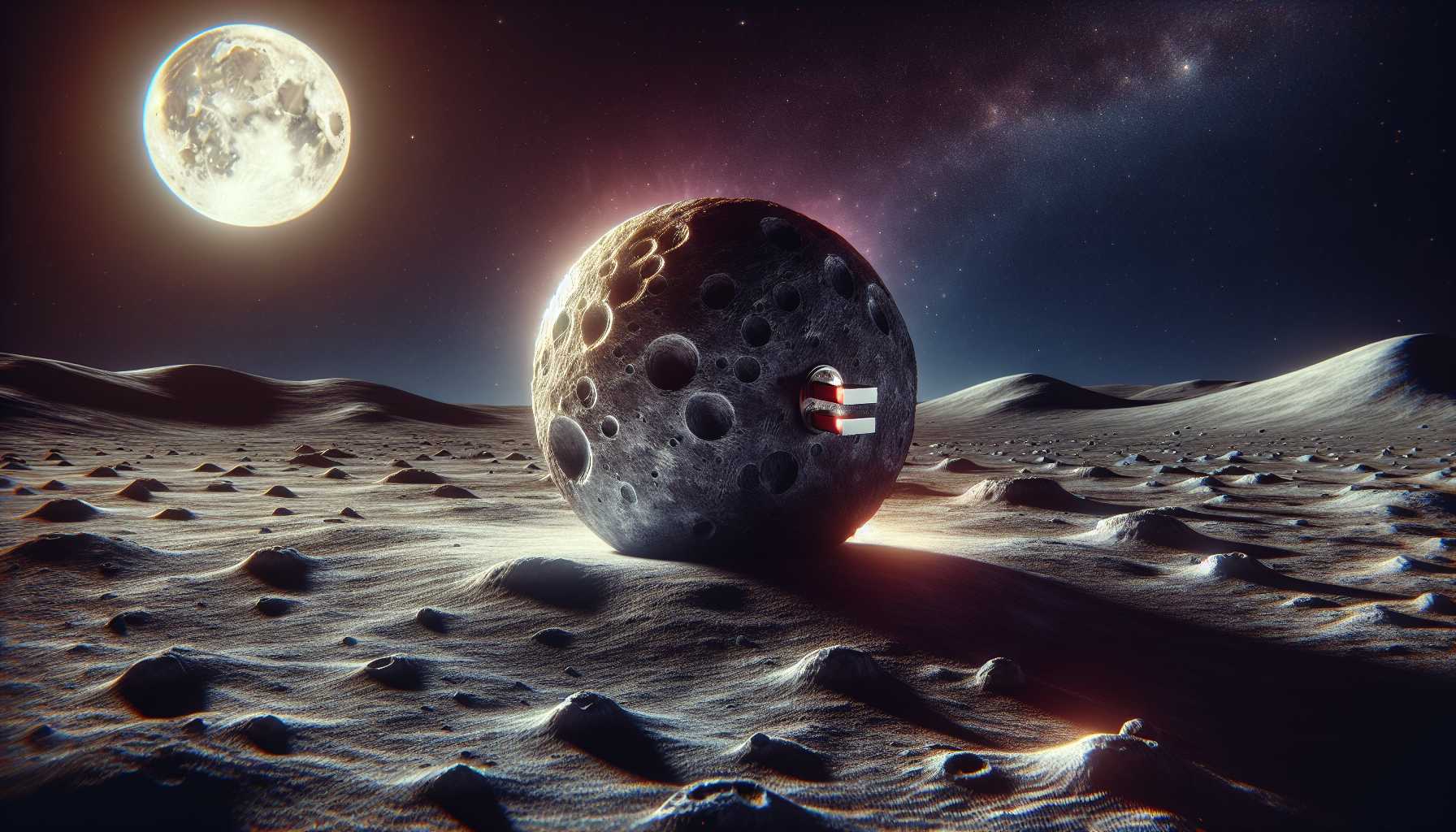 In the vacuum of space, the Moon sits pristinely cold and silent, an eternal companion to our bustling Earth. But beneath the tranquility lies a puzzle pieced together from the finest dust any vacuum cleaner would dread—the Moon’s surface dust. And not just any dust, mind you, but dust that might just cling to your soul with a magnetic whisper. Let’s dive into a recent cosmic detective story where scientists, armed with artificial intelligence, set out to scrutinize over a million images of the Moon’s surface. Here’s the magnetic twist: they’ve spotted a few lunar boulders with a potentially unique magnetic makeover.
In the vacuum of space, the Moon sits pristinely cold and silent, an eternal companion to our bustling Earth. But beneath the tranquility lies a puzzle pieced together from the finest dust any vacuum cleaner would dread—the Moon’s surface dust. And not just any dust, mind you, but dust that might just cling to your soul with a magnetic whisper. Let’s dive into a recent cosmic detective story where scientists, armed with artificial intelligence, set out to scrutinize over a million images of the Moon’s surface. Here’s the magnetic twist: they’ve spotted a few lunar boulders with a potentially unique magnetic makeover.
Artificial Intelligence: The New Lunar Cartographer
 AI, that brilliant offspring of our technological prowess, played the role of lunar cartographer, eagerly sifting through a treasure-trove of images snapped by NASA’s Lunar Reconnaissance Orbiter. Talk about data-overload—it turned up 130,000 suspects with “compelling features.” But before you think this was a pixel-peeping party, let me assure you that this was serious science in action, and the researchers made sure to eyeball half of that number themselves. Quite the feat!
AI, that brilliant offspring of our technological prowess, played the role of lunar cartographer, eagerly sifting through a treasure-trove of images snapped by NASA’s Lunar Reconnaissance Orbiter. Talk about data-overload—it turned up 130,000 suspects with “compelling features.” But before you think this was a pixel-peeping party, let me assure you that this was serious science in action, and the researchers made sure to eyeball half of that number themselves. Quite the feat!
Spotlight on the Superlative Rock
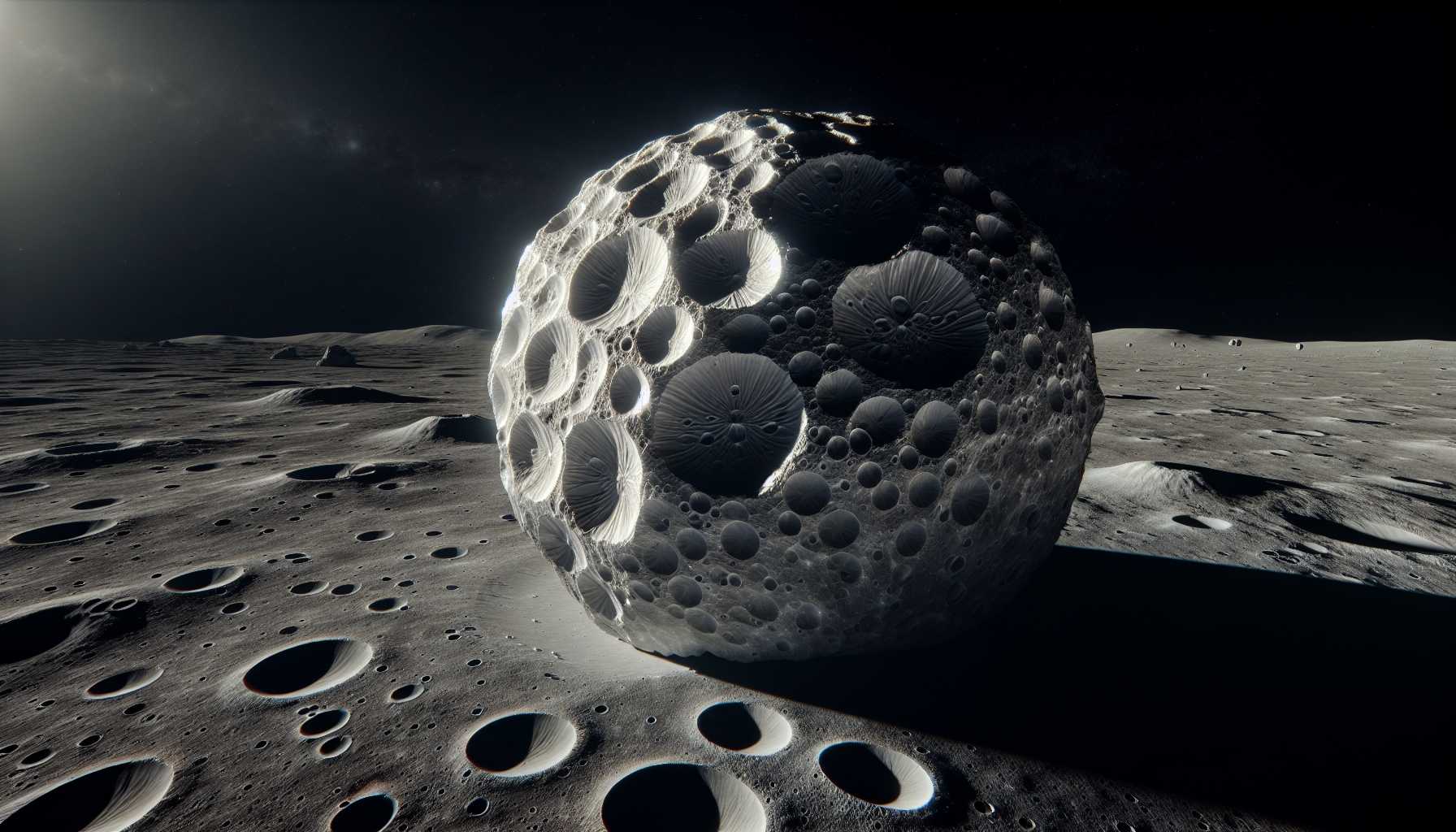 Imagine a classic where’s Waldo, but on a cosmic scale, and where Waldo is a boulder that doesn’t like the spotlight. What caught the scientists’ attention was a particular rock scattering less sunshine compared to its peers. Could it be harboring secret properties in its dust? Ottaviano Rösch, the study’s lead author, certainly thinks it’s worth a closer look.
Imagine a classic where’s Waldo, but on a cosmic scale, and where Waldo is a boulder that doesn’t like the spotlight. What caught the scientists’ attention was a particular rock scattering less sunshine compared to its peers. Could it be harboring secret properties in its dust? Ottaviano Rösch, the study’s lead author, certainly thinks it’s worth a closer look.
Lunar Dust: Not Just a Nuisance
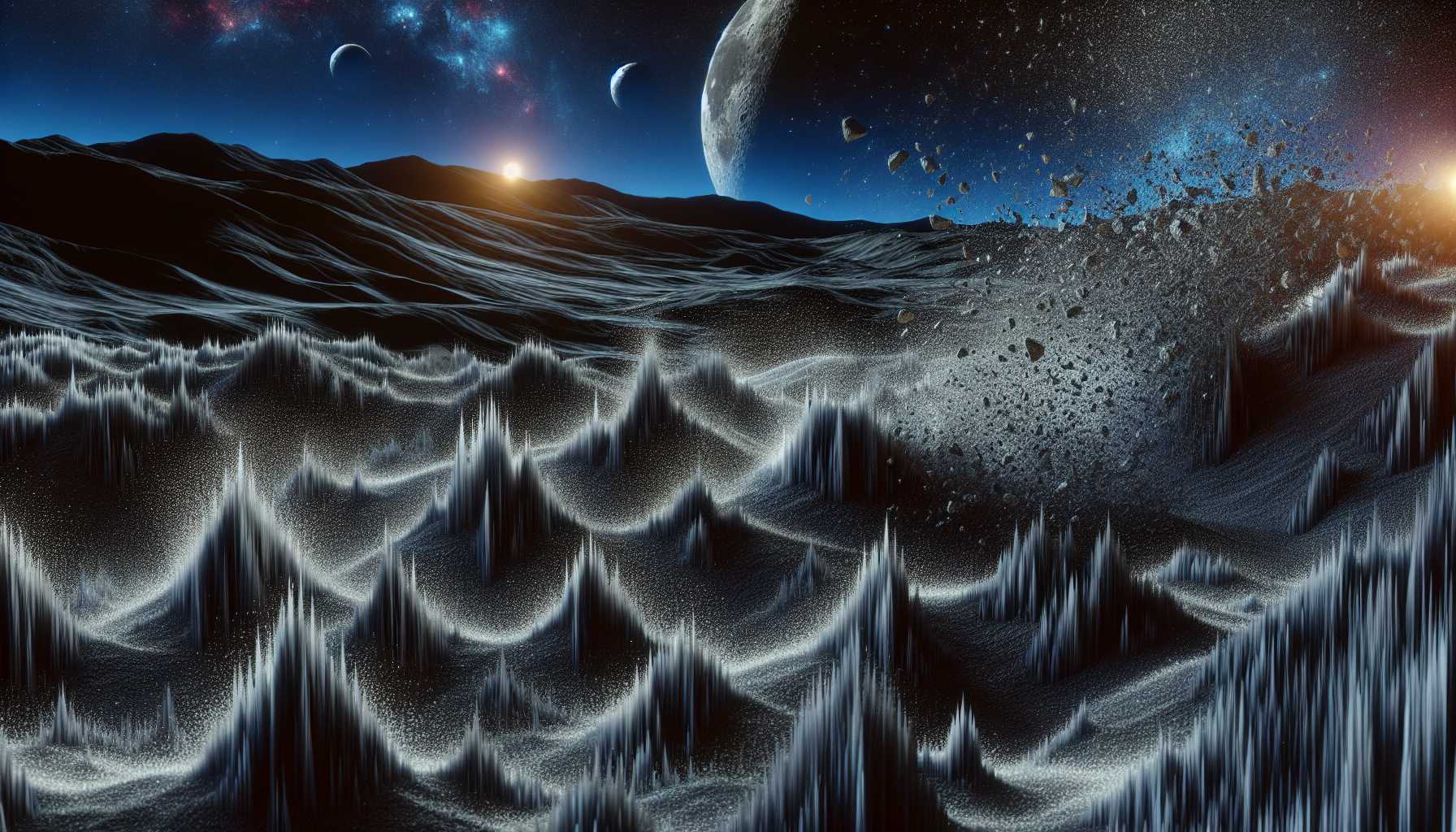 On Earth, dust is a sneeze-triggering nuisance, something for vacuums to vanquish. On the Moon, it’s a persistent pest without the usual wind and erosion to whisk it away. But this isn’t your garden-variety dust—it’s electrostatically charged with an edge sharp enough to give you more than an ‘achoo!’
On Earth, dust is a sneeze-triggering nuisance, something for vacuums to vanquish. On the Moon, it’s a persistent pest without the usual wind and erosion to whisk it away. But this isn’t your garden-variety dust—it’s electrostatically charged with an edge sharp enough to give you more than an ‘achoo!’
The Case of the Dim Boulders
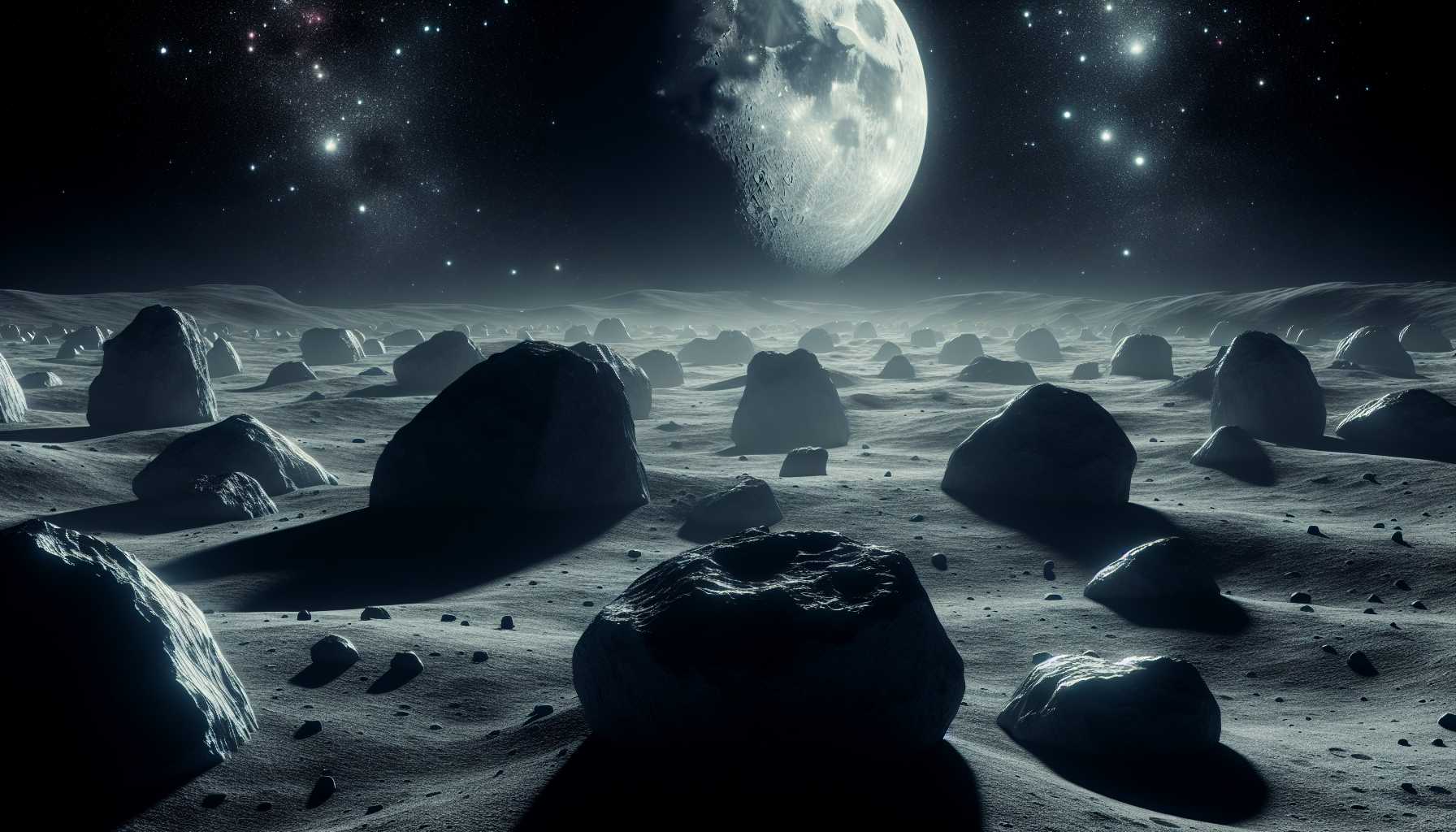 Our trusty team believes these dust-cloaked boulders hurled onto the lunar stage when the crater Reiner K made its explosive debut. Unlike their luminescent lunar counterparts, these boulder buddies bucked the trend by being, well, a bit dimmer. And before you ask “reflected light much?” the answer is no, these boulders weren’t just having a dark day; their dim demeanor stumped even the researchers.
Our trusty team believes these dust-cloaked boulders hurled onto the lunar stage when the crater Reiner K made its explosive debut. Unlike their luminescent lunar counterparts, these boulder buddies bucked the trend by being, well, a bit dimmer. And before you ask “reflected light much?” the answer is no, these boulders weren’t just having a dark day; their dim demeanor stumped even the researchers.
Compact Dust: A Bright Idea That’s Not So Bright
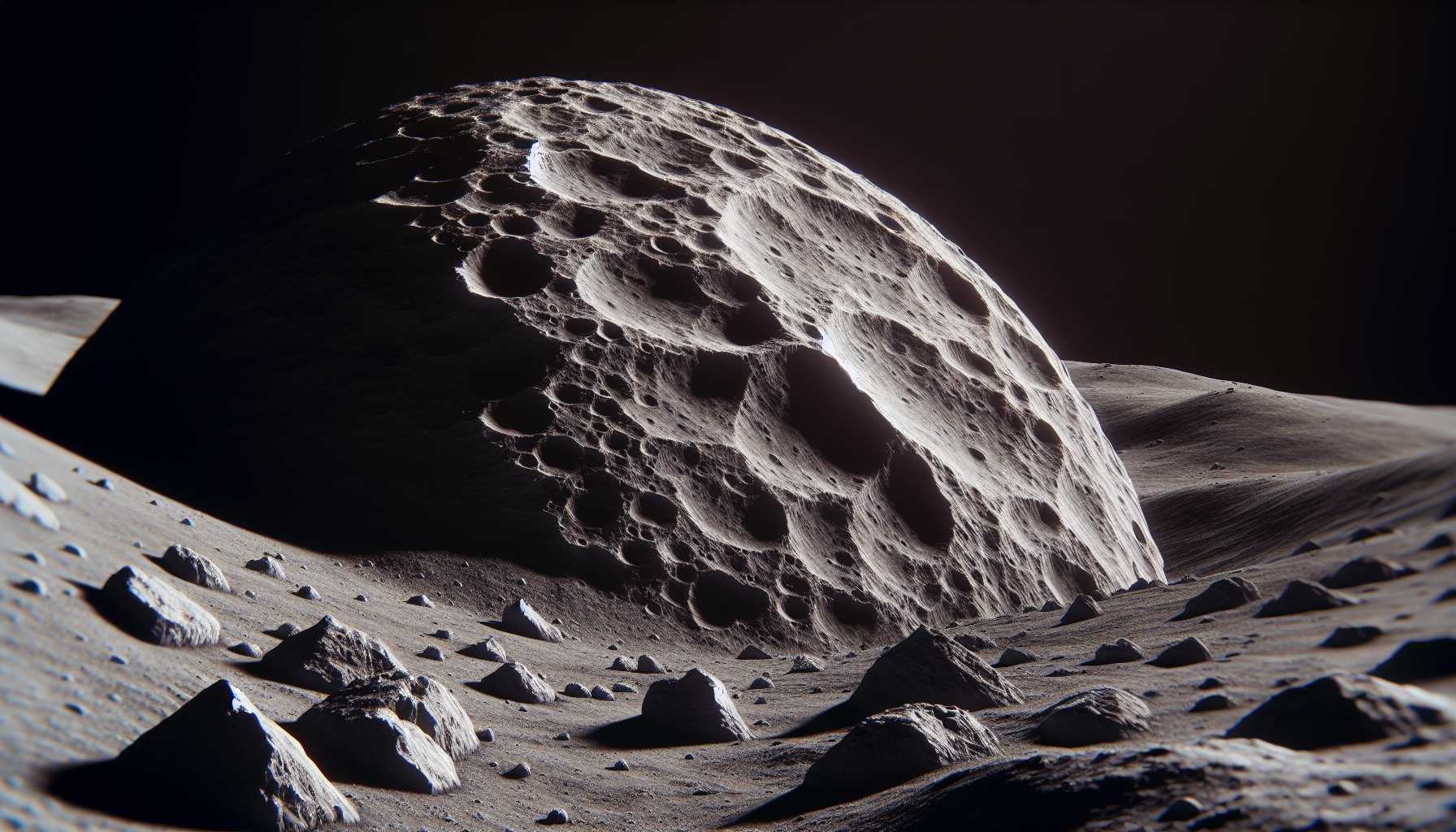 Normally, you’d think compacted dust would dazzle with brightness. But these lunar rocks, sporting their compact dust coats, were playing hard to spot. Marcel Hess, a co-author of the study, couldn’t help but scratch his head at this anomaly.
Normally, you’d think compacted dust would dazzle with brightness. But these lunar rocks, sporting their compact dust coats, were playing hard to spot. Marcel Hess, a co-author of the study, couldn’t help but scratch his head at this anomaly.
Calling Lunar Vertex: The Next Lunar Detective
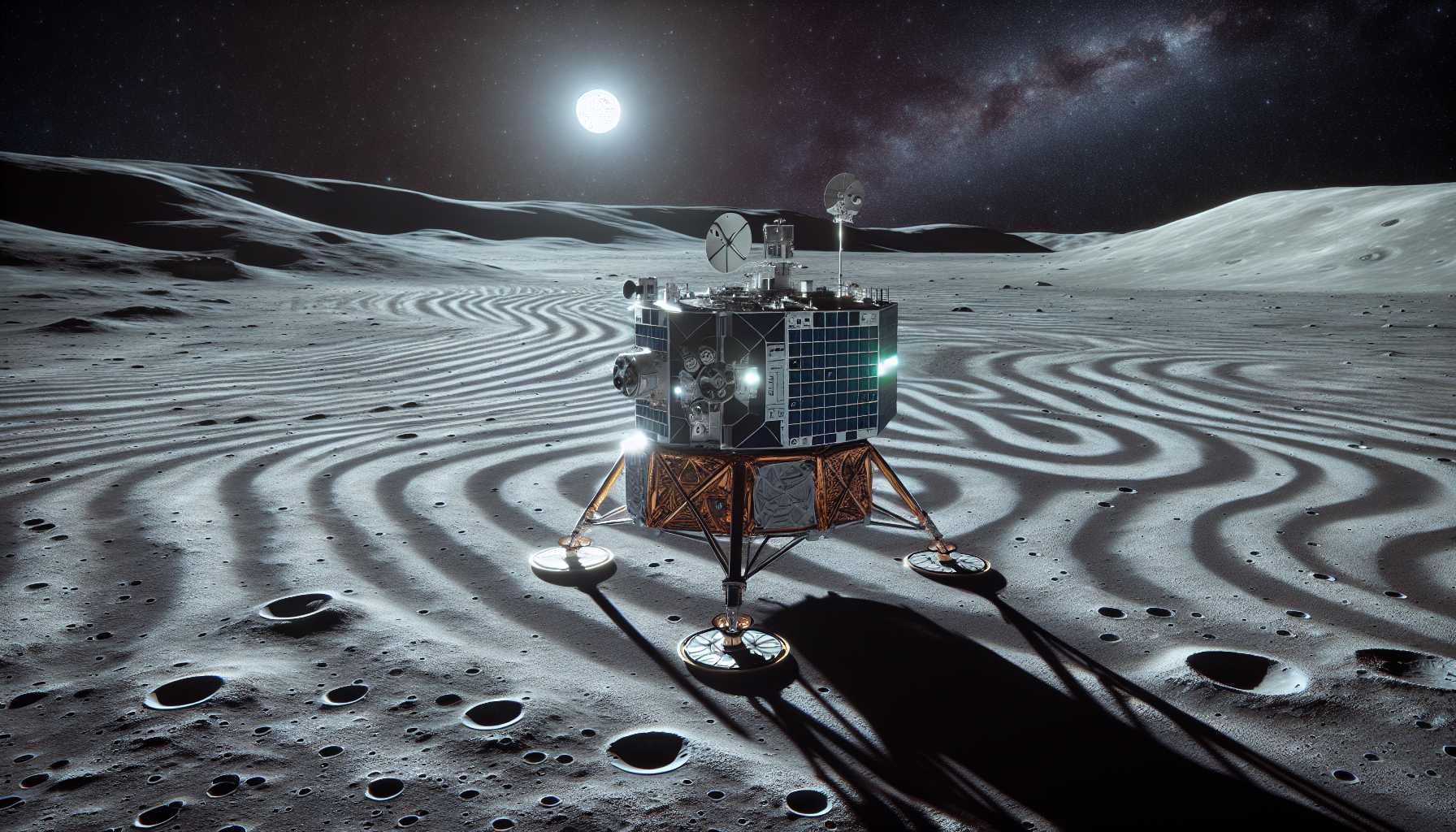 Enter Lunar Vertex, our next contender for unraveling this magnetic mystery. This solar-powered, intrepid lander has a rendezvous with the Reiner Gamma region to sweep up some answers. It could be that we’re on the cusp of a revelation, one that might spill the cosmic beans about the Moon’s formation and impact history – fingers crossed!
Enter Lunar Vertex, our next contender for unraveling this magnetic mystery. This solar-powered, intrepid lander has a rendezvous with the Reiner Gamma region to sweep up some answers. It could be that we’re on the cusp of a revelation, one that might spill the cosmic beans about the Moon’s formation and impact history – fingers crossed!
Moon Dust and Market Dust: Investor Takeaways
 As a tech investor, one often hovers between earthly concerns and aspirations that reach for the stars—or in this case, the Moon. This type of research might seem like pure science, but it holds untapped potential for industries raring to benefit from space exploration. From developing new materials inspired by lunar dust properties to honing AI for remote analysis—as an investor, keeping an eye on these developments could pinpoint the next gravitational pull in tech innovation.
As a tech investor, one often hovers between earthly concerns and aspirations that reach for the stars—or in this case, the Moon. This type of research might seem like pure science, but it holds untapped potential for industries raring to benefit from space exploration. From developing new materials inspired by lunar dust properties to honing AI for remote analysis—as an investor, keeping an eye on these developments could pinpoint the next gravitational pull in tech innovation.
Final Thoughts: The Lunar Dust-Up
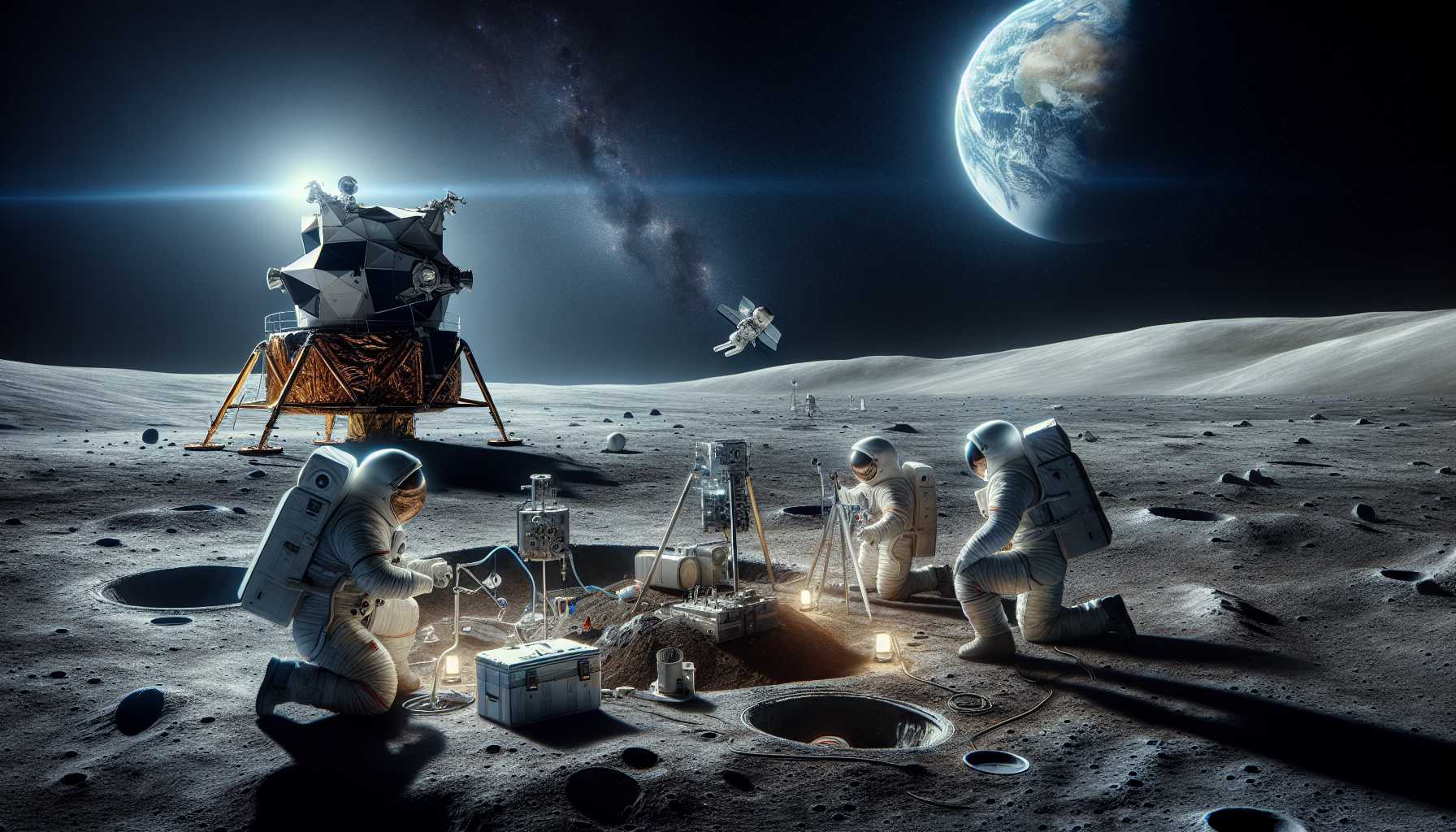 From the comfort of our blue dot, we’ve glimpsed at a handful of Moon rocks that could rewrite lunar textbooks. And, as it often happens with space, every discovery opens a door to a hundred new questions. But isn’t that the beauty of it? The cosmos, with all its mysteries, beckons us to explore, discover, and occasionally, sneeze at the wonders it sprinkles, magnetically charged or not. Stay tuned for more cosmic updates that even AI can’t predict!
From the comfort of our blue dot, we’ve glimpsed at a handful of Moon rocks that could rewrite lunar textbooks. And, as it often happens with space, every discovery opens a door to a hundred new questions. But isn’t that the beauty of it? The cosmos, with all its mysteries, beckons us to explore, discover, and occasionally, sneeze at the wonders it sprinkles, magnetically charged or not. Stay tuned for more cosmic updates that even AI can’t predict!









